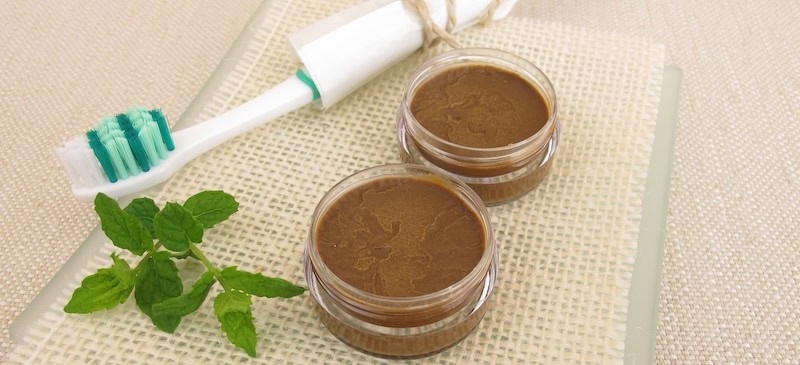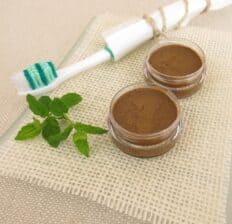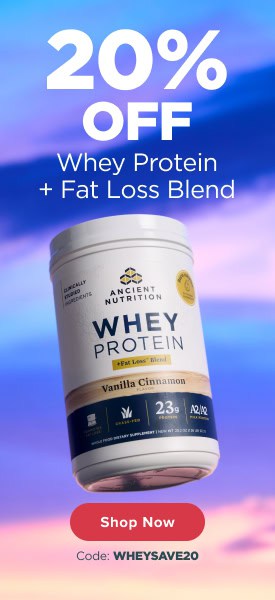This Dr. Axe content is medically reviewed or fact checked to ensure factually accurate information.
With strict editorial sourcing guidelines, we only link to academic research institutions, reputable media sites and, when research is available, medically peer-reviewed studies. Note that the numbers in parentheses (1, 2, etc.) are clickable links to these studies.
The information in our articles is NOT intended to replace a one-on-one relationship with a qualified health care professional and is not intended as medical advice.
This article is based on scientific evidence, written by experts and fact checked by our trained editorial staff. Note that the numbers in parentheses (1, 2, etc.) are clickable links to medically peer-reviewed studies.
Our team includes licensed nutritionists and dietitians, certified health education specialists, as well as certified strength and conditioning specialists, personal trainers and corrective exercise specialists. Our team aims to be not only thorough with its research, but also objective and unbiased.
The information in our articles is NOT intended to replace a one-on-one relationship with a qualified health care professional and is not intended as medical advice.
Homemade Probiotic Toothpaste
January 31, 2025

When it comes to tooth decay and cavities, it’s easy to point to eating too much sugar from candy and other foods or not brushing your teeth well enough as the culprits, but the truth is more complicated than that. The oral microbiome is vital to both the health of your teeth and your overall body, and using probiotic toothpaste can help maintain your oral microbiome.
Observations of many native populations who ate traditional diets prior to the introduction of refined sugars and refined flour showed they suffered virtually no tooth decay, even when their teeth were ground down from eating gritty foods and despite never brushing their teeth or seeing a dentist.
No, we are not suggesting you emulate this. Brushing your teeth is one of the most effective ways to help protect your teeth from the physical effects of eating a less-than-optimal diet, and brushing with this homemade probiotic toothpaste is even better.
Diet, bacteria and dental health
A study conducted by Dr. Weston A. Price (a Canadian dentist and founder of the National Dental Association) shed some light on why native populations didn’t suffer from tooth decay. People in the study who switched to a diet low in sugar, refined carbohydrates and phytic acid and high in minerals (calcium, magnesium and phosphorus) and fat-soluble vitamins (A, D, E and K) reduced their risk of developing tooth decay and actually reversed decay that had been present.
Yes, that means the teeth can heal.
Let’s talk a little more about what’s going on in your mouth, especially that slick, slimy coating that grows all over your teeth, tongue and gums. This coating is a “biofilm,” or a tough layer of living bacteria, in which the individual bacterium cling tightly to each other and to surfaces, making them very, very hard to dislodge.
Biofilm is also called plaque, but biofilm may be a better term, as it reminds us it is a living film of bacteria. These are bacteria that cause tooth decay and gum disease and that are ready to take advantage of teeth and gums made vulnerable by less-than-optimal nutrition, inflammation and stress.
Brushing with a store-bought toothpaste (it’s a good idea to avoid any brands that contain triclosan) or a Homemade Baking Soda Toothpaste will help keep that nasty biofilm at bay for a few hours, but it may not be able to banish the sticky film completely. (If you have yucky, slimy, morning breath after brushing last thing before bed, you’ve got a biofilm problem.)
A biofilm is a signal that the ecosystem in your mouth is out of whack. In other words, you have lots of disease- and decay-causing bacteria and not enough beneficial bacteria.
Trying to kill off every living bacterium in your mouth is not the answer. After generations of millions of people dutifully swishing antibacterial mouthwashes around twice a day, yet still suffering from tooth decay and gum disease, attempting to kill off all the bacteria, bad and good, in your mouth doesn’t seem to work. (This Homemade Mouthwash with Essential Oils may be more effective than some commercial antibacterial mouthwashes.)
Even if you could do it, a mouth with no bacteria would be the perfect place for any new bacteria that arrived, good or bad, to reproduce wildly, which is definitely not a good situation.
What is the answer then? Probiotic toothpaste!
Benefits of probiotic toothpaste
You are probably wondering what else you can do, especially if you already have tooth decay or gum disease. Changing your diet is critical to dental health, but you may not be ready to completely give up on refined foods (or you ate them in the past, leaving your teeth vulnerable to decay) and brushing hasn’t helped enough.
So how about trying something completely different? How about brushing with a totally different kind of toothpaste: probiotic toothpaste?
Brushing with probiotic toothpaste can help make your mouth a healthier place by not only temporarily dislodging bad bacteria, but also actually adding good bacteria (probiotics) to displace the decay- and disease-causing ones.
Studies increasingly support probiotic toothpaste as an effective way to deliver those good bacteria to where they will do the most good, better than a probiotic rinse. Other studies show that routine brushing with a probiotic toothpaste for even a few weeks can help decrease the levels of disease- and bad-breath-causing bacteria in your mouth, reduce plaque/biofilm buildup, and ease gum inflammation.
So what are you waiting for? Make a batch of homemade probiotic toothpaste, and turn your toothbrush into a magic wand!
How to make probiotic toothpaste
A blend of coconut oil, bentonite clay powder, probiotics and prebiotics forms the foundation of this homemade probiotic toothpaste recipe.
Bentonite clay powder looks off-white or pale gray in the jar but turns a more intense brownish-gray when mixed with coconut oil. This is normal.
Your probiotic toothpaste isn’t going to win any beauty contests, but your mouth will love it.
Here’s how to make this homemade probiotic toothpaste:
First, place the coconut oil container in a bowl of hot water to liquefy some of it. Depending on your room temperature, this may take up to 15 minutes.
Next, measure and place all the ingredients into a small bowl.
Open the capsules by grabbing the ends with the tips of your fingers while holding them over the bowl and gently pulling and twisting. Once open, dump the powder into the bowl.
Be sure to stir the mixture until it’s completely blended. It will be a bit runny at first, but it will set up as it cools.
Scoop the completed paste into a small glass jar with a lid. Use a jar rather than a tube because coconut oil liquifies at 76 degrees Fahrenheit and the paste will get soft, or even runny, at warm room temperatures and very firm at cool room temperatures (even low 60s), making it hard to squeeze out of a tube.
That’s it! Your homemade probiotic toothpaste is ready to use.
Be sure to store it at room temperature.
Making smaller batches more frequently to ensure freshness is also a good idea.
Here are some more tips for making this DIY probiotic toothpaste recipe:
- Adding more clay helps keep your paste firmer in warm weather. Adding less clay makes it less firm, which makes dispensing it easier in the winter if your house is cool.
- Probiotics are living beneficial bacteria. For this recipe, pick one that can be stored at room temperature.
- Prebiotics are natural fiber compounds that boost the activity of probiotic bacteria.
- Bentonite clay tastes, well, mild and clay-like. It isn’t unpleasant, but adding xylitol makes the paste sweeter, which kids may find more acceptable.
- Pleasantly flavored essential oils help make the paste more palatable and leave a nice aftertaste.
How to use probiotic toothpaste
Using a small spoon or knife, scoop about a ½ teaspoon of probiotic toothpaste onto your brush. Pressing your brush into the paste works, too, but make sure each person in the family has his or her own jar if you do this.
Give your teeth, and all the other surfaces in your mouth, a good brushing. The paste will liquefy almost immediately when put into your mouth, so there is no need to add water.
When you are done brushing, swish the liquid around, forcing it through the gaps between your teeth. This helps get the probiotics into all the nooks and crannies your brush can’t reach.
Then spit out the remainder, and rinse with water. Now you have clean teeth and a healthier oral microbiome!
More DIY oral health recipes
Here are some other methods and recipes to make to support your oral health, including your teeth, gums, tongue and more:
Print
Homemade Probiotic Toothpaste
- Total Time: 2 min
- Yield: 20 uses 1x
Description
This homemade probiotic toothpaste recipe cleans your teeth, helps detoxify your mouth and finishes with a cooling sensation. Try it today!
Ingredients
- 2 tablespoons coconut oil
- 2 tablespoons bentonite clay
- 1 capsules organic probiotics
- 1 capsule fructooligosaccharides or other inulin-type prebiotic
- up to 1/2 tablespoon xylitol powder (optional)
- up to 10 drops peppermint essential oil or other essential oil
- small jar
Instructions
- Place coconut oil container in a bowl of hot water to liquefy some of it. (Depending on your room temperature, this may take up to 15 minutes.)
- Measure all ingredients into a small bowl.
- Open capsules by grabbing the ends with the tips of your fingers while holding them over the bowl and gently pulling and twisting. Once open, dump the powder into the bowl.
- Stir until completely blended. It will be a bit runny, but it will set up as it cools.
- Scoop the paste into a small glass jar with a lid.
- Store at room temperature.



